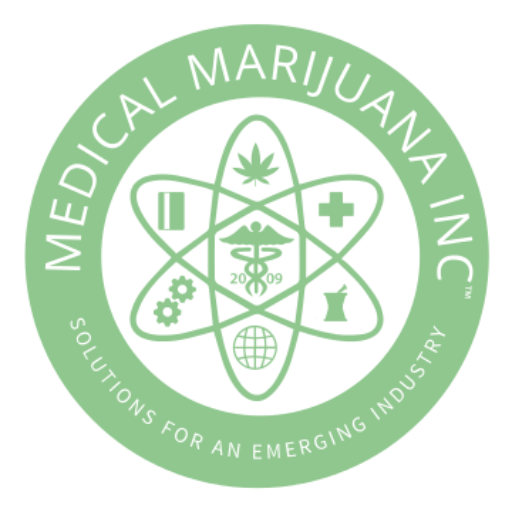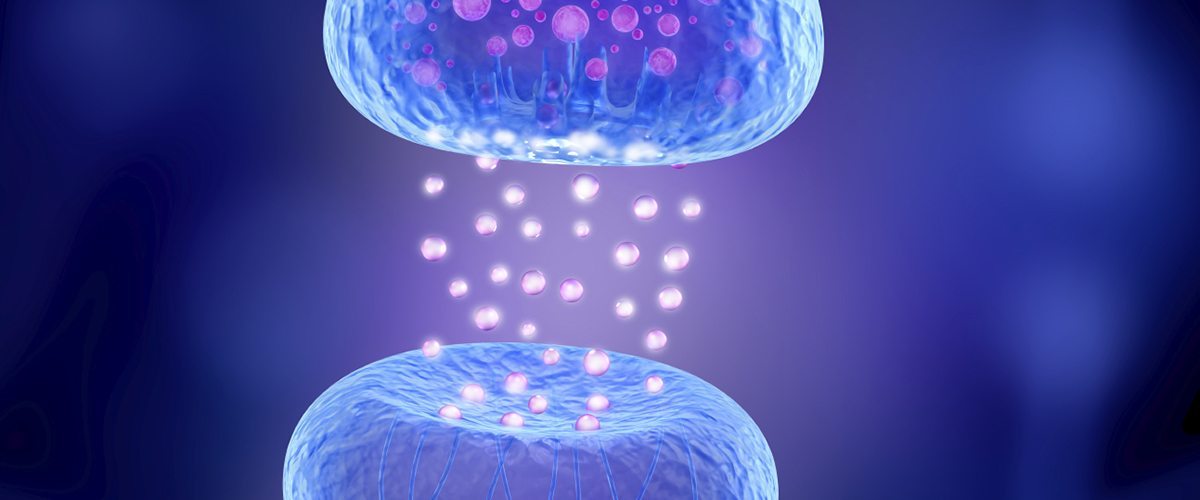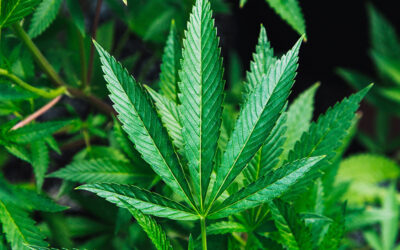The following information is presented for educational purposes only. Medical Marijuana Inc. provides this information to provide an understanding of the potential applications of cannabinoids. Links to third party websites do not constitute an endorsement of these organizations by Medical Marijuana Inc. and none should be inferred.
Have you ever wondered how cannabinoids interact with your body? The answer is through the endocannabinoid system and natural cannabinoid receptors in the human body. Keep reading for more about the role of the endocannabinoid system.
The endocannabinoid system (EC system) is responsible for regulating balance in our body’s communication between cells, appetite and metabolism, memory, and more. In spite of the balancing role the EC system takes on, until the recent endocannabinoid system discovery, it remained an unknown part of the human body’s functions.
Named for the plant that inspired its discovery, the endocannabinoid system is a key to promoting overall health and equilibrium, but its role in regulating the body is only just becoming understood.
It is through the endocannabinoid system that the naturally occurring cannabinoids interact with our bodies and trigger their beneficial effects. With the potential to greatly affect the way our bodies work, a healthy endocannabinoid system is essential and it’s key that we recognize how to maintain it.
The History of the Endocannabinoid System
Across cultures and building through the 19th century, extractions of the cannabis plant were widely used for a number of natural purposes. However, following practical prohibition of the cannabis plant in 1937 by the U.S. government for fear of abuse of its psychoactive properties, the study of cannabis was eliminated, stalling the progress of our understanding of the endocannabinoid system and its role in the body. For nearly 50 years, marijuana was labeled as illicit in the minds of Americans, which directly affected our relationship with hemp as well.
Scientists were able to define endocannabinoids in the early 1990’s when Lisa Matsuda announced that her team at the National Institute of Mental Health had first identified a THC sensitive receptor in the brains of lab rats.
The path to the discovery of the endocannabinoid system and cannabinoid receptors in the human body, however, started more than a century earlier.
In 1895, researchers T. Barlow Wood, W.T. Newton Spivey, and Thomas Hill Easterfield became the first to isolate and identify a cannabis-derived cannabinoid, cannabinol (CBN) (Wood, Spivey & Easterfield, 1896).
Over the next 70 years, researchers identified more cannabinoids, including R. Adams and others who identified and isolated CBD in 1940, and in 1964, Ralph Mechoulam and colleagues isolated and identified tetrahydrocannabinol (THC) (Pertwee, 2006) (Gaoni & Mechoulam, 1964).
Following those monumental breakthroughs, researchers spent decades exploring those cannabinoids and their properties.
Before Matsuda’s discovery of the cannabinoid receptor in the animal’s brain, it was often speculated that cannabinoids produced their balancing effects via nonspecific interactions.
It was in the early and mid-1990s when Mechoulam and colleagues officially discovered the endocannabinoid system. It happened after he and his team were able to locate and identify two of the body’s naturally produced major endocannabinoids: anandamide and 2-arachidonoylglycerol, or 2-AG (Mechoulam & Hanus, 2000).
Since then, scientists have labored to learn as much as they can about the endocannabinoid system, our naturally occurring cannabinoids, and the ways cannabis alters this balance, publishing over 20,000 scientific studies referencing cannabinoids in just the last two decades.
What Is the Endocannabinoid System?
The endocannabinoid system is made up of several integrated mechanisms:
- Enzymes responsible for creating and destroying cannabinoids
- Receptor sites on cells to receive cannabinoids
- Endocannabinoids themselves (cannabinoid like compounds that are naturally produced by the human body)
These mechanisms are predominantly responsible for communication within the body to best regulate various biological responses to keep the body in homeostasis.
One of the prime questions raised in these early studies was whether or not the body produces its own natural equivalents to the previously discovered compounds called phytocannabinoids, like THC and CBD, found in the cannabis plant (Mandal, 2014). The answer turned out to be “yes” – in the form of the endocannabinoids anandamide and 2-AG, which are the two prominent analogs to THC and CBD, (Pacher et al, 2006). With the understanding that the cannabinoid system allows humans to create our own cannabinoids, the door to deconstructing the purpose of the endocannabinoid system was opened.
Endocannabinoids As a Response
Endocannabinoids are created in response to needs within the larger physiological system and are largely understood to be used for the body’s regulatory functions. Acting backwards on presynaptic cells, they control the volume at which communicating signals are sent. It is in this way that endocannabinoids affect duration and intensity of the wide range of physiological processes under their control.
How Does the Endocannabinoid System Work?
Whenever there are deviations from homeostasis (balance) in the body’s functions, the endocannabinoid system is activated and begins to respond accordingly by synthesizing endocannabinoids, which act as neurotransmitters.
When the body creates endocannabinoid neurotransmitters, they are picked up by specialized cannabinoid receptors, which sit on the surface of cells. These receptors are found in a wide range of physiological regions.
Like a key fits into a lock, endocannabinoids interact with these receptors and transmit information about changing conditions to kick-start a response, with the goal of helping the body achieve homeostasis, or equilibrium, within the body, despite outside influences (Alger, 2013).
The endocannabinoid system’s receptor sites include CB1 and CB2 receptor variants, which respond differently to various cannabinoids (Pacher et al, 2006). Some cells can even contain both types of receptors, each responsible for a different function.
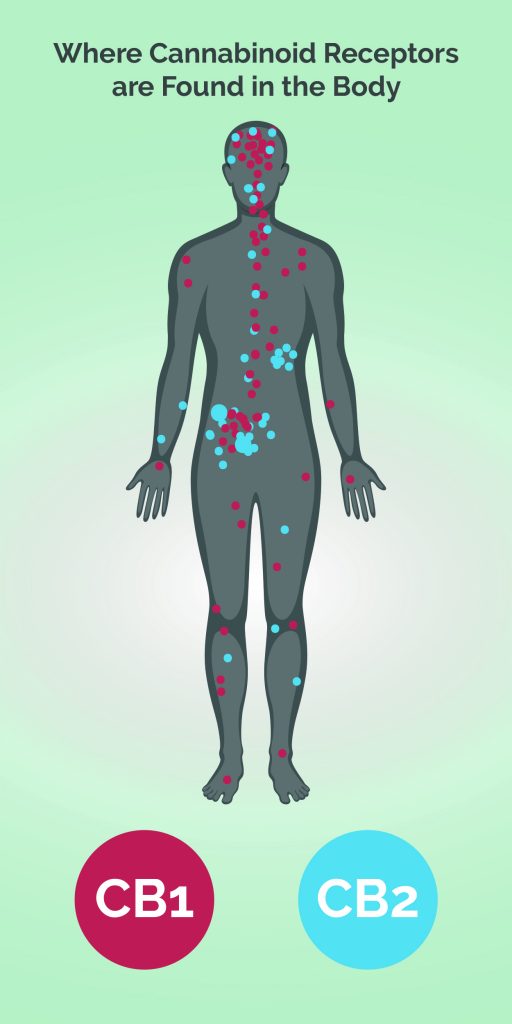
There are two major endocannabinoids produced by the body – 2-arachidonoylglycerol (2-AG) and Anandamide (AEA).
2-AG is considered a full agonist of both CB1 and CB2 receptors. This means that it binds with, and fits well inside, both receptors to activate them to stimulate a physiological response.
Anandamide is considered a partial agonist of both receptors, because, while it binds with and activates the receptors, it doesn’t fit as well inside them and subsequently doesn’t trigger such a powerful physiological response (Parcher, Batkai & Kunos, 2006).
Once the function that had deviated from homeostasis returns to equilibrium and the endocannabinoids are no longer needed, the third piece of the system – the metabolic enzymes – breaks down and degrades these endocannabinoids to shut off their signal.
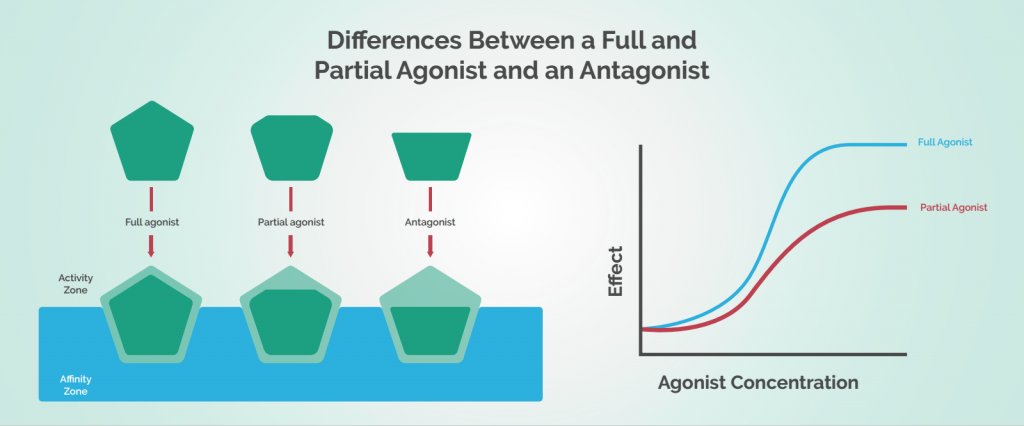
Fatty acid amide hydrolase (FAAH) degrades Anandamide, and monoacylglycerol lipase (MAGL) breaks down 2-AG. By eliminating the endocannabinoids, the endocannabinoid system “turns off” the molecular signals and ends whatever physiological activity it had stimulated.
How Do Cannabis Derived Cannabinoids Work with the Endocannabinoid System?
As scientists learn more about the endocannabinoid system, they also explore the potential role the cannabis derived cannabinoids like THC, cannabidiol (CBD), cannabinol (CBN), and more could play in supporting the system.
Science evidences a strong relationship between the endocannabinoid system and CBD. Cannabinoids, like those found in CBD isolates and CBD oils, mimic the behavior of endocannabinoids and interact with the cannabinoid receptors to augment the endocannabinoid system. As the cannabinoids interact with the cannabinoid receptors, they stimulate various physiological responses.
THC, the well recognized psychoactive compound found in marijuana, activates receptors to elicit a chemical response. It is considered an agonist of both CB1 and CB2 receptors because it directly binds to the receptors and activates them. THC tends to favor CB1 receptors because it fits very well inside them and therefore is able to stimulate a strong physiological reaction.
When THC reacts with CB1 receptors, this is what causes the well known “high” feeling from marijuana. THC also directly activates CB2 receptors, but is considered a partial agonist and therefore doesn’t elicit such a strong physiological response.
CBD causes chemical changes by blocking receptors. It tends to have low affinity for both CB1 and CB2 receptors, and instead acts as an indirect antagonist of agonists. This means that CBD sits imperfectly inside the receptors, not activating them but preventing other chemical messengers like THC from binding to them (Pacher, Batkai & Kunos, 2006).
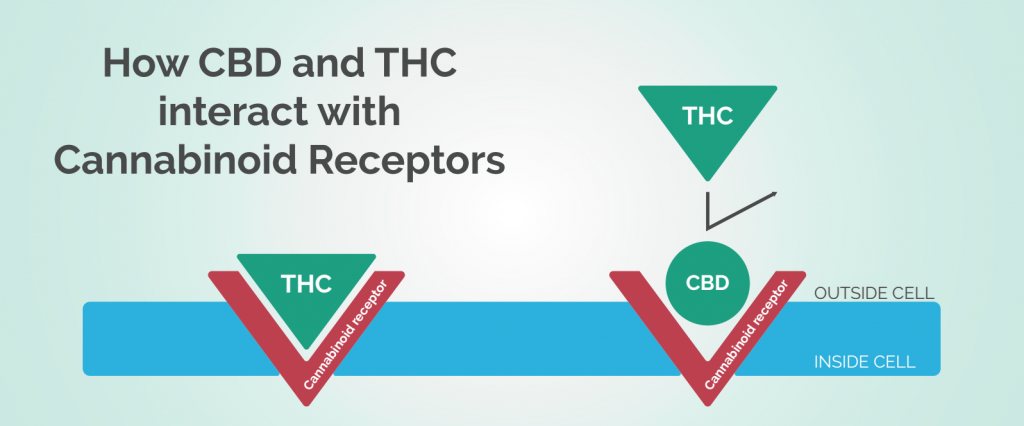
As we continue to learn more about the endocannabinoid system, we will also learn about the potential for the scope of active compounds from cannabis (like THC, CBD, and CBN).
Should I Add Cannabinoids to My Body?
One theory about the endocannabinoid system is the proposed endocannabinoid deficiency syndrome, or CECD, which speculates that, for some people, the body does not generate enough endocannabinoids due to under stimulation of the system (Smith and Wagner, 2014). This concept, originally proposed by researcher E.B. Russo in 2004, further speculates that the endocannabinoid system deficiency could negatively affect your quality of life.
Phytocannabinoids, like the THC from cannabis or the concentrated CBD in hemp, obviously affect the endocannabinoid system. However, it has also been shown that non-intoxicating phytocannabinoids from other plants, and even other compounds like terpenes and flavonoids, are picked up by receptors in our endocannabinoid systems (Gertsch et al, 2010).
Because small doses of phytocannabinoids can encourage the body to create more naturally occurring endocannabinoids and their receptors, it may be possible to bolster the sensitivity of our native systems with regular cannabinoid servings (Pacher et al, 2006).
Overall, significant research must still be done to better understand the impact of the endocannabinoid system on our overall health and how supporting our natural endocannabinoid production with plant based cannabinoids may play a significant therapeutic role in our health. However, extensive early studies show great potential for using this vital system to the benefit of patient health.
To learn more about how individual cannabinoids can be used to promote overall well-being, read our informational articles on CBD, THC, CBN, and CBC.
References:
Alger, B. E. (2013). Getting High on the Endocannabinoid System. Cerebrum: The Dana Forum on Brain Science, 2013, 14. Retrieved from https://www.ncbi.nlm.nih.gov/pmc/articles/PMC3997295
Gaoni, Y., and Mechoulam, R. (1964). Isolation, Structure, and Partial Synthesis of an Active Constituent of Hashish. Journal of the American Chemical Society, 86(8), 1646-47. Retrieved from http://pubs.acs.org/doi/abs/10.1021/ja01062a046.
Gertsch, J., Pertwee, R. G., & Di Marzo, V. (2010). Phytocannabinoids beyond the Cannabis plant – do they exist? British Journal of Pharmacology, 160(3), 523–529. Retrieved from http://doi.org/10.1111/j.1476-5381.2010.00745.x
Kaur, R., Ambwani, S.R., Singh, S. (2016). Endocannabinoid system: A multi-facet therapeutic target. Current Clinical Pharmacology, 11(2), 110-7. Retrieved from http://www.eurekaselect.com/141330/article.
Kogan, N. M., & Mechoulam, R. (2007). Cannabinoids in health and disease. Dialogues in Clinical Neuroscience, 9(4), 413–430. Retrieved from https://www.ncbi.nlm.nih.gov/pmc/articles/PMC3202504.
Lee, M. (2012). The Discovery of the endocannabinoid system. Retrieved from http://www.beyondthc.com/wp-content/uploads/2012/07/eCBSystemLee.pdf
Mandal, A. (2014, June 14). Phytocannabinoids. News Medical. Retrieved from http://www.news-medical.net/health/Phytocannabinoids.aspx.
Mechoulam, R., and Hanus, L (2000, November). A historical overview of chemical research on cannabinoids. Chemistry and Physics of Lipids, 108(1-2), 1-13. Retrieved from http://www.sciencedirect.com/science/article/pii/S0009308400001845.
National Cancer Institute. (2016). Cannabis and cannabinoids. Retrieved from http://www.cancer.gov/about-cancer/treatment/cam/hp/cannabis-pdq#section/_11
Pacher, P., Batkai, S., & Kunos, G. (2006). The Endocannabinoid System as an Emerging Target of Pharmacotherapy. Pharmacological Reviews, 58(3), 389–462. http://doi.org/10.1124/pr.58.3.2. Retrieved from https://www.ncbi.nlm.nih.gov/pmc/articles/PMC2241751.
Pacher, P., & Kunos, G. (2013). Modulating the endocannabinoid system in human health and disease: successes and failures. The FEBS Journal, 280(9), 1918–1943. Retrieved from http://doi.org/10.1111/febs.12260.
Pandey, R., Mousawy, K., Nagarkatti, M., & Nagarkatti, P. (2009). Endocannabinoids and immune regulation. Pharmacological Research : The Official Journal of the Italian Pharmacological Society, 60(2), 85–92. Retrieved from http://doi.org/10.1016/j.phrs.2009.03.019.
Pertwee, R.G. (2006). Cannabinoid pharmacology: the first 66 years. British Journal of Pharmacology, 147(Suppl 1), S163-S171. Retrieved from https://www.ncbi.nlm.nih.gov/pmc/articles/PMC1760722.
Smith, S. & Wagner, M. (2014) Clinical endocannabinoid deficiency (CECD) revisited: can this concept explain the therapeutic benefits of cannabis in migraine, fibromyalgia, irritable bowel syndrome and other treatment-resistant conditions. Neuro Endocrinol Letters. 35(3):198-201. Retrieved from http://www.ncbi.nlm.nih.gov/pubmed/24977967.
Wood, T.B., Spivey, W.T.N., and Easterfield, T.H. (1896). XL. – Charas. The resin of Indian hemp. Journal of the Chemical Society, Transactions, 69, 539-546. Retrieved from http://pubs.rsc.org/en/content/articlelanding/1896/ct/ct8966900539#!divAbstract.
